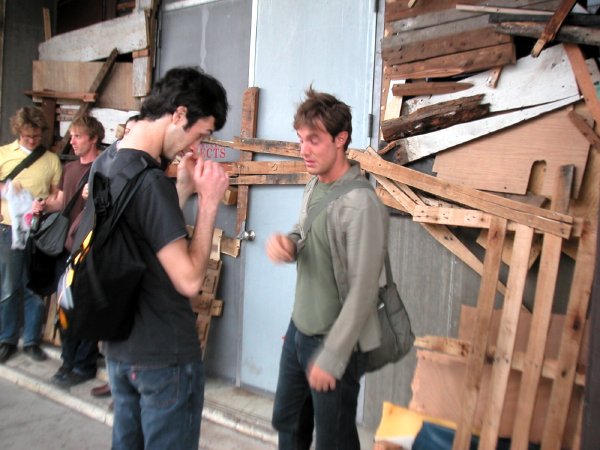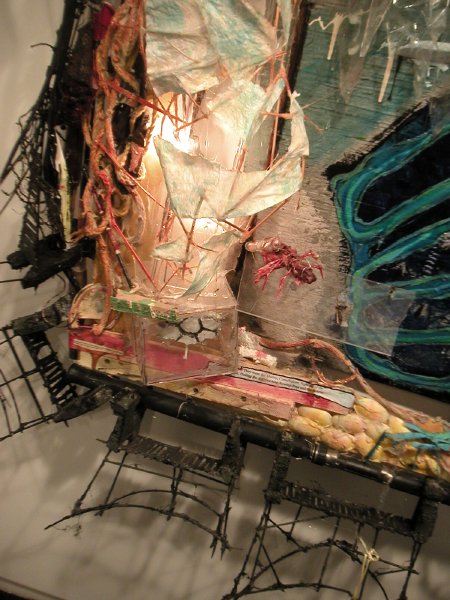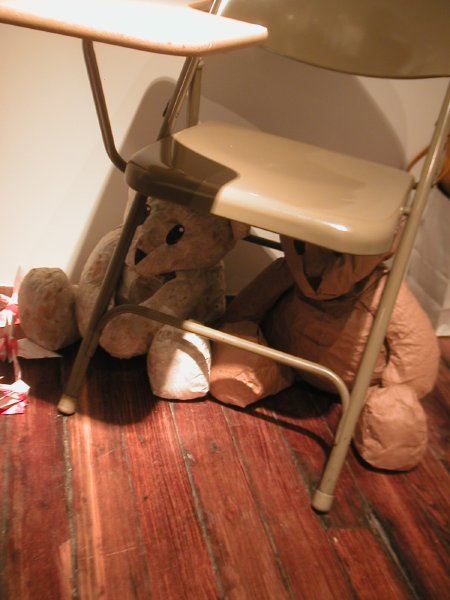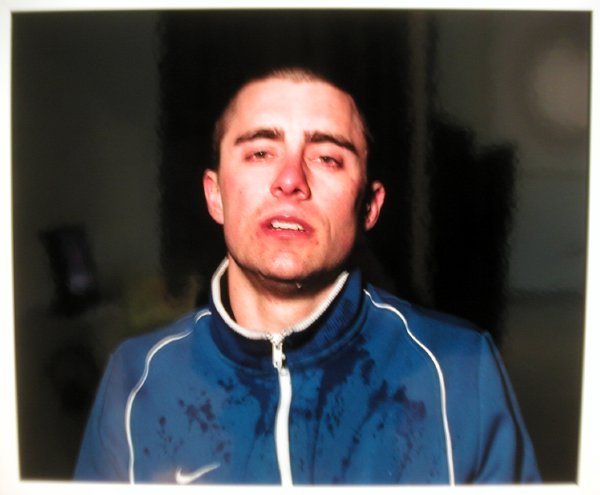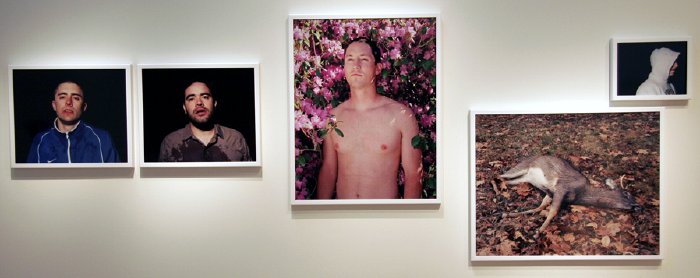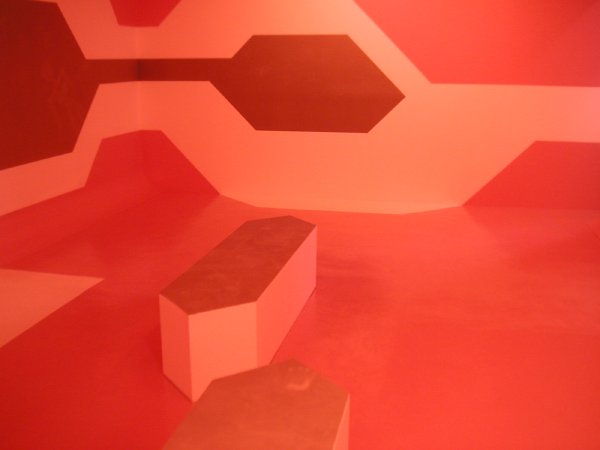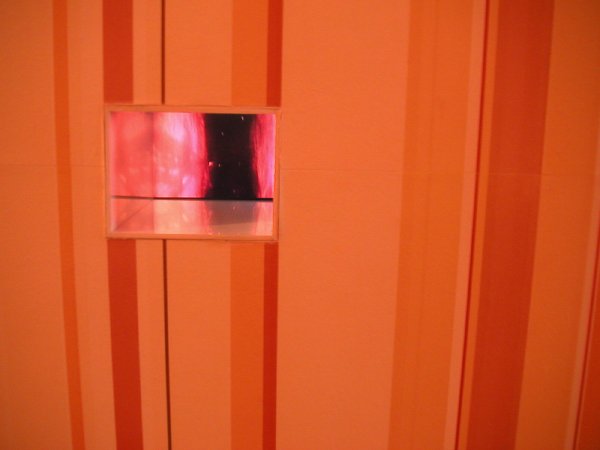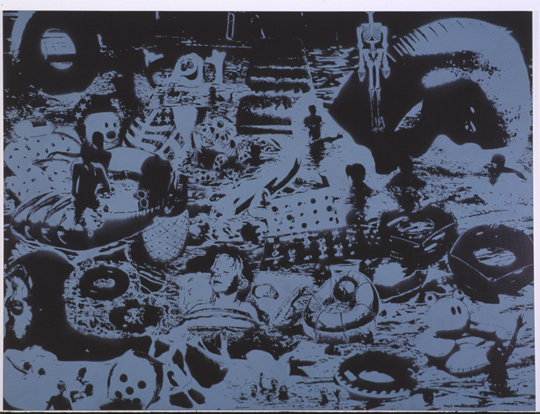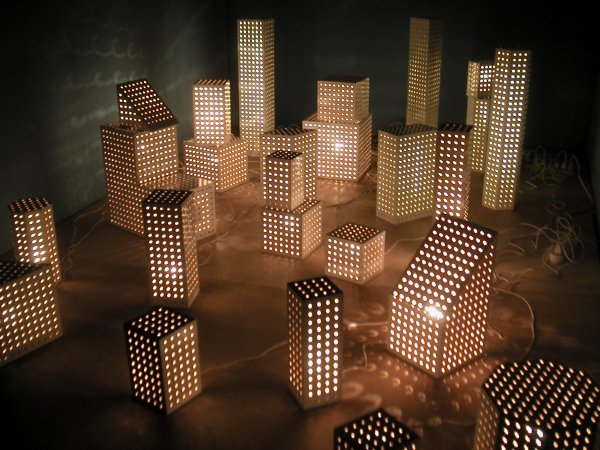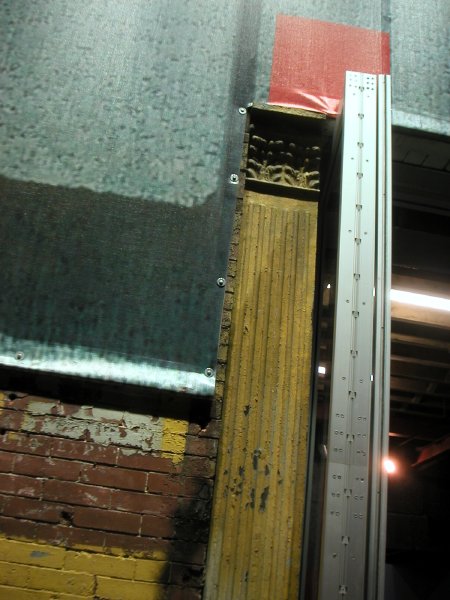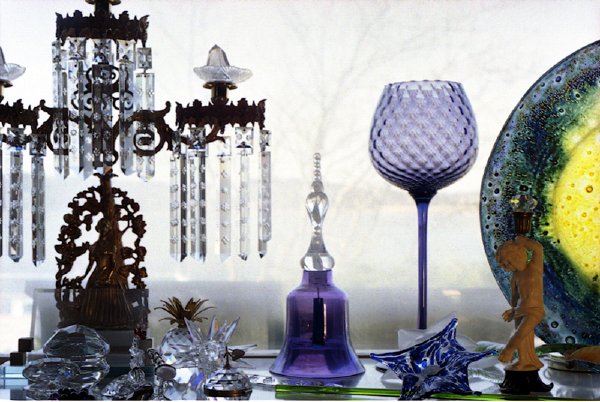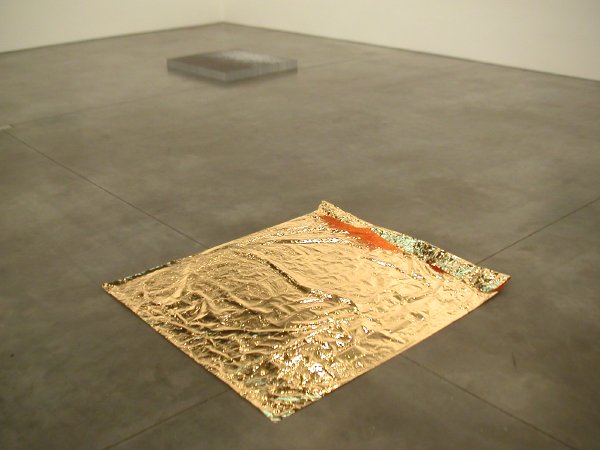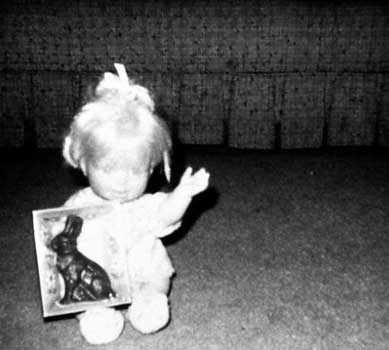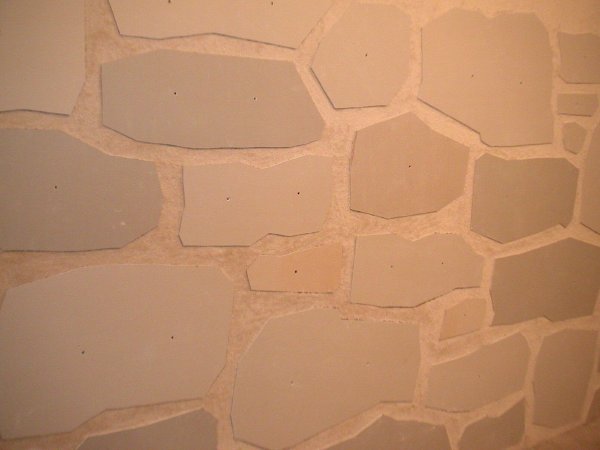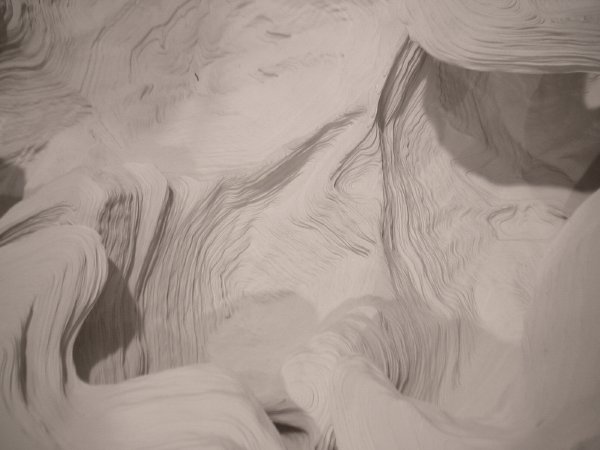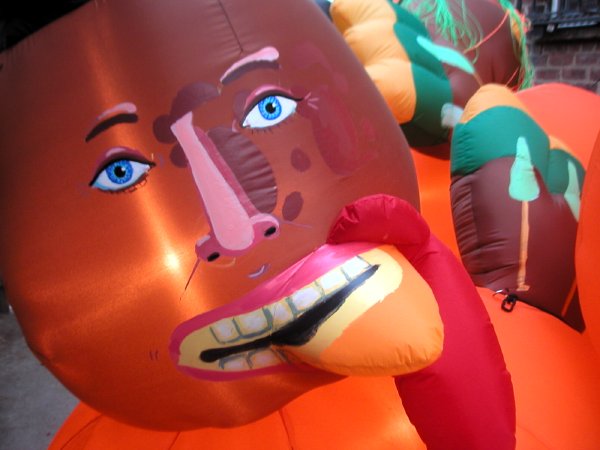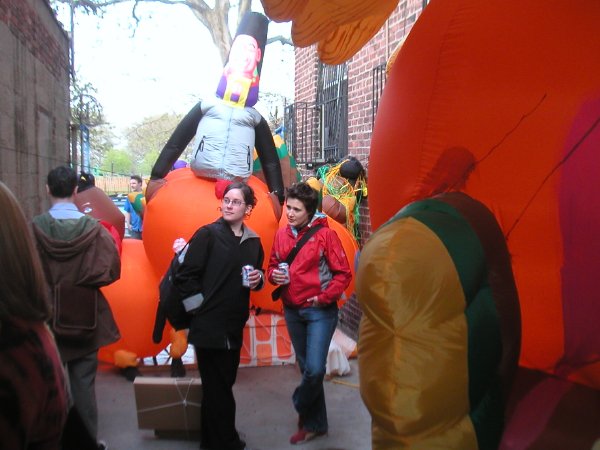
John F. Simon, Jr. Endless Victory 2005 software, Apple Powerbook G4, acrylic plastic 28" x 28" x 3.25" [detail/screen still]
Sandra Gering showed only two modest-sized works by John F. Simon, Jr. in the show which closed on Saturday. Either one however could stand in for an entire art collection, since each of the two computer screens mounted in exquisite cut and engraved Plexiglas frames presents an infinitely-changing image. The one shown above is Simon's take, in the words of the press release, "on the endless merging, dividing, overtaking, turning, starting and stopping motions" of the city which inspired Piet Mondrian's unfinished 1943/44 Victory Boogie-Woogie.
No image in either work will ever be repeated on the screen, so the pieces will be renewing themselves forever. You may not be able to afford one of these jewels, but if you could, you'd never have to buy another work of art for novelty alone.
The gallery installation showed four pieces from each of the two editions, only beginning to suggest the endless variations produced by the software.
There's really a lot going on here. The screen images are never entirely abstract, they regularly mimic three dimensions, and their inspirational sources are a balance of humanistic ideals and conceptual purity.
The second edition, Endless Bounty, emerges from the tension between Simon's urban lifestyle and his longing for nature. The software flips between the two ideals displaying maps, drawings, photographs and three-dimensional models in a continual effort to capture our gaze.I'm really attracted to the intelligence and creativity of Simon's art, but he adds something most artists who work with computer code do not have: He knows how to draw, and it's always a part of his "machinery."
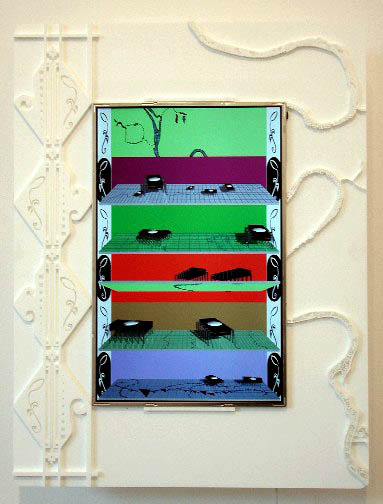
John F. Simon, Jr. Endless Bounty 2005 software, Apple Powerbook G4, acrylic plastic 23" x 17.5" x 3.25" [detail/screen still]
[lower image from Sandra Gering Gallery]
